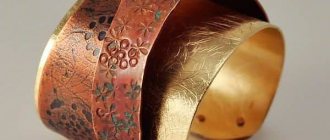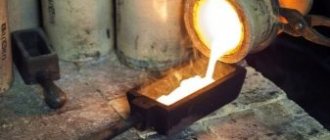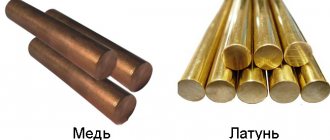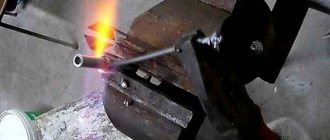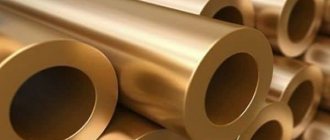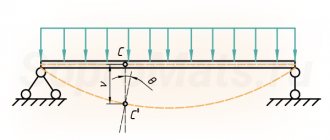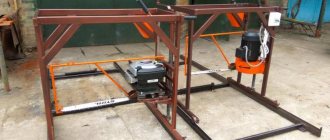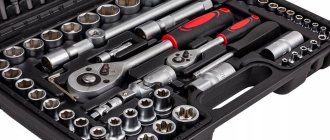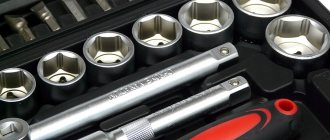Faucets are used both in the bathroom and in the kitchen. But not all of them are of good quality. No one should look at the beautiful and attractive design, one must first understand what material was used to make these devices. The most common materials are brass and silumin. Not everyone knows how to distinguish a brass faucet from a silumin one and what the difference is between them. Meanwhile, the durability and quality of work of such products depends on this.
Characteristics of brass faucets
Brass is an alloy based on copper with the addition of zinc . Tin, lead, iron, nickel, and manganese are added in small volumes. There is always less tin contained so that tin bronze is not obtained.
Based on the volume of zinc in the composition, they are distinguished:
- tompak (red brass) - 5 - 20%;
- yellow brass - 20 - 36%.
Zinc-copper products have a strength that is always higher than the main original components. Suitable for arc and gas welding.
According to their chemical composition they are distinguished:
- Two-component simple brass, in which there are no impurities of other elements, containing only copper and zinc.
- Multi-component special brasses, including alloying additives to improve qualities.
Special alloys are divided into groups named according to the main alloying component, for example, aluminum, tin, manganese, lead and others. There are chrome-plated cases and uncoated yellow products on sale.
Pros and cons of brass faucets
Brass does not conduct heat well, you won't get burned
Corrosion resistance
Not destroyed by alkaline and acidic components
Strong, durable and reliable products
A faucet without a chrome layer will darken and turn green over time.
High price
It is undesirable to expose taps to sulfur dioxide or ammonia, but such substances are rare in everyday life.
Difference from other materials
A brass faucet always has a clear thread.
Brass faucets weigh heavier than silumins, but their mass is less compared to stainless steel.
Main differences:
- The inside of the mixer body has a smooth surface, which is due to special processing technology.
- Always a clear cut.
- Eccentrics and cartridges in brass products are of higher quality than in silumin ones.
For pressure-treated brass, there is the letter L in front, followed by letters indicating elements that are subject to standardization, but zinc is not released. Zinc and impurities make up the rest of the volume. For example, L72 - the material includes 72% copper, 28% impurities and zinc. Another example: LAZ60-1-1 indicates a content of 60% copper, 1% aluminum and 1% iron. The remainder is pollution.
Casting brasses are designated by letters and numbers that immediately follow them and indicate the percentage content. The volume of zinc is always normalized first, therefore the first letters are LC. Undesirable inclusions are also determined as the rest of the volume.
What is silumin
Silumin is an alloy of aluminum and silicon. The composition may contain impurities of copper, titanium, magnesium and manganese, which are added specifically. The presence of iron, calcium, zinc indicates insufficient purification of the substance. It is not uncommon for sodium or lithium to be present.
Aluminum is the base of the alloy: its content is about 90%. This explains the external and high-quality similarity between aluminum and silumin. Both alloys are grayish, silvery when cut, and have a low density. Like aluminum, silumin is not afraid of corrosion due to a protective film of oxide compounds.
The physical characteristics of silumin depend on the second component. Silicon makes it strong and wear-resistant. The material can withstand enormous overloads, but up to a certain point. After passing the strength threshold, silumin becomes brittle and brittle.
Aluminum-silicon compounds have a low melting point - about 670 °C. Because of this, the cost of the alloy is lower than that of other iron substances.
You might be curious
Recommendations for selection
The cost of silumin products is lower than brass, so many users purchase budget products. Even if devices made from an alloy of aluminum and silicon are treated with care and shocks are avoided, destruction inside the housing can occur due to a water hammer in the water supply system.
Silumin cranes are used for no more than 1.5 - 2.5 years and, most often, cannot be repaired. They are installed in temporary cabins, trailers, and dachas.
Brass faucets are of high quality and are used in bathrooms of apartments and private houses. The products are designed to last for a long time; gaskets and valve axle boxes are replaced in them, so we can talk about the possibility of repair.
Silumin and brass faucets: which material to choose
Silumin and brass are the main materials from which faucets are made. There are a huge number of enthusiastic reviews about silumin mixers, and there are no less fans of brass devices.
Finally
As for the price of mixers, it varies from 1,000 to 60,000 rubles. The differences depend on the material the faucet is made from and where you purchase it from. In dubious places you will buy a “branded” mixer for 1000-2000 rubles, but no one will give you a guarantee of operation. It is better to contact specialized stores when purchasing such things.
- You will find good reviews about expensive German (Hansa, Grohe), Italian (Fari, Fiori), Polish (Ferro), Czech (Imprese) faucets.
- From the middle price category, Emivi (Italy), Vidima (Bulgaria) and Mixxen (Spain-China) are praised.
- Among the budget (cheap) options, pay attention to the mixers Rossinka (Russia-China), Santekhpribor (Russia), Ukrsanlit (Ukraine).
When replacing plumbing fixtures in the bathroom or kitchen, problems arise in choosing faucets. Today the range and price range is very wide. In large chain stores you can find a mixer for 300 rubles, and in front of it there may be a similar one in appearance, but for 5,000 rubles. The buyer has questions about the difference between the two. This article was created to answer several of these questions.
Price
As for the price of this material, it is quite low, about 80 rubles per 1 kg. alloy But the prices for goods made from this alloy are already an order of magnitude higher, but also quite inexpensive when compared with goods made from pure metal.
19.02.2020 911
go to sections
Items you may be interested in:
Bust of Pushkin A.S.
Ancient bust of Pushkin A.S. era of the USSR. Small item. Has obvious signs of time, scuffs, dents, scratches. This bust of Pushkin is... 1500 ₽
Bust of Gagarin Yu. A.
Bust of the first man in space - Yuri Alekseevich Gagarin. Yu.A. Gagarin - Soviet pilot-cosmonaut, hero of the Soviet Union, April 12, 1961... 0 ₽
Application
The increased industrial interest in silumin is mainly due to the possession of such properties as high fluidity, low specific gravity and low tendency to form shrinkage cavities.
For these reasons, silumin is actively used in the following areas:
- In aircraft construction, AL2 grade silumin is used in the manufacture of parts that are not subject to mechanical and thermal loads. AL9 and AL34 are used to produce components for more critical purposes. In particular, this includes galley cooling pistons, pumps, etc.
- In shipbuilding, silumin is used as cladding for steel and cast iron structures. This may be due to the resistance of silumin to the aggressive effects of sea water.
- In the space industry, silumin alloys are used in the production of devices, the parts of which require the material to have a low coefficient of linear expansion and a low density. - In the automotive industry, silumin AL34 is actively used for the manufacture of crankcases of internal combustion engines and other housing parts operating at high internal pressure.
- Silumin is used as a material for the manufacture of pipeline fittings. Mixers, adapters, nipples, union nuts - this is an incomplete list of parts where silumin alloys are used.
Design and colors
Plumbing products play no less a role in interior design than household appliances. The mixer should ideally fit the sink not only in size, but also in design, so it is better to buy equipment together and from the same series.
When choosing a kitchen faucet, interior designers recommend using the following rules. For a high-tech style, you should choose a laconic single-lever device of a simple shape coated with chrome. A good choice would be a faucet with a thermostat. For interiors in retro and Provence style, the best solution would be to choose a two-valve faucet made in gold, copper or bronze. In a Scandinavian-style kitchen, a stainless steel or stone-effect faucet will look great.
When choosing the color of the device, you should not only focus on the color of the sink, but also take into account additional factors. Both the overall color line of the set and some specific aspects matter, for example, the shade of handles on cabinets and drawers, the design of the kitchen apron, and the presence of decorative elements. For a square sink, an L-shaped faucet is better suited; for a round and oval sink, a device with a round spout is better suited.
How to choose the optimal size?
The ease of use of the equipment depends on the size of the spout. The main parameter is the height of the mixer, which must be coordinated with the depth of the sink. The higher the depth of the bowl, the higher the faucet can be installed. If you use a device with a high spout for a shallow sink, splashes may splash onto the floor. On the other hand, a spout that is too low will not allow you to conveniently wash tall pots. It is better to select a mixer from the height range of 15-30 cm. Devices with a lower height are suitable for sinks with a depth of 17-19 cm, and those with a larger height are suitable for bowls deeper than 19 cm.
The projection of the spout is designed so that the stream hits the center of the sink. A kitchen faucet must be swivel. For sinks with one bowl, you can choose a device with a small rotation angle; for sinks with several bowls, the spout should be more mobile. The most expensive devices can rotate 180 degrees.
Choosing a shower head
Popular materials are metal and plastic. Metal elements are durable and expensive. Plastic is cheaper, but has a shorter service life. It is easy to break if handled carelessly.
| TIP! Many cascade type faucets do not look like traditional faucets. They are disguised as a shelf on the wall, produced on a metal leg, in the form of a lamp, etc. |
Shower heads can have several modes of supply and spray of water flow. This can be jet, drip, or massaging irrigation. Type of installation of the element: manual, on the wall or ceiling. If you choose the manual option, you should purchase an additional holder. It will have to be mounted into the wall.
Alloy groups
Silumin alloys are divided into several groups. This distinction is made according to the purpose of the materials:
- AK 12 is a eutectic silumin containing 12% silicon. During heat treatment, the casting is not strengthened and does not become hard during shrinkage. Parts made of such material are structurally designed for sealed low-load devices.
- Highly alloyed hypereutectic silumin is labeled, for example, AK4M5. Belongs to the piston group and is used when performing work under high-temperature conditions. It has high resistance to high temperatures and wear resistance. The use of this alloy for particularly important products operating under high load conditions. These are large-sized and critical parts.

